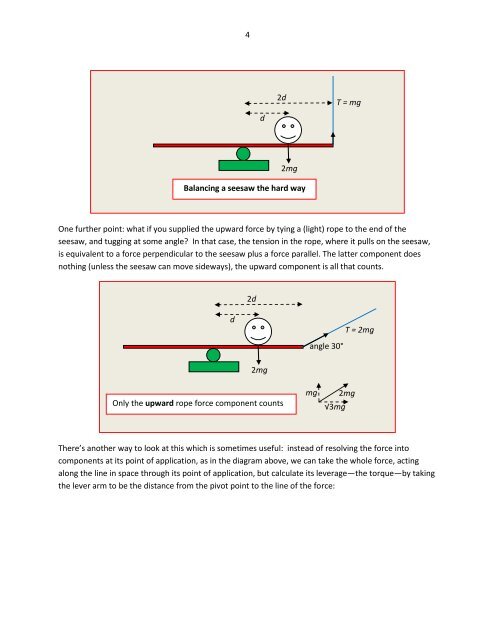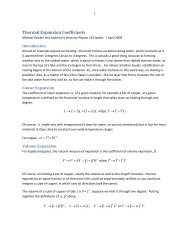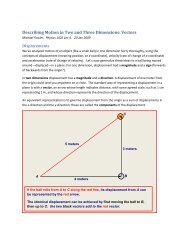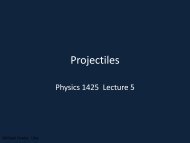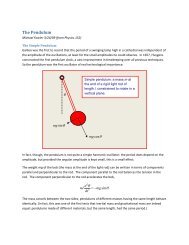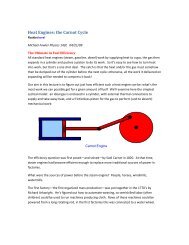Class Notes on Rotational Motion - Galileo and Einstein
Class Notes on Rotational Motion - Galileo and Einstein
Class Notes on Rotational Motion - Galileo and Einstein
Create successful ePaper yourself
Turn your PDF publications into a flip-book with our unique Google optimized e-Paper software.
4d2dT = mg2mgBalancing a seesaw the hard wayOne further point: what if you supplied the upward force by tying a (light) rope to the end of theseesaw, <strong>and</strong> tugging at some angle? In that case, the tensi<strong>on</strong> in the rope, where it pulls <strong>on</strong> the seesaw,is equivalent to a force perpendicular to the seesaw plus a force parallel. The latter comp<strong>on</strong>ent doesnothing (unless the seesaw can move sideways), the upward comp<strong>on</strong>ent is all that counts.2ddT = 2mgangle 30°2mgOnly the upward rope force comp<strong>on</strong>ent countsmg√3mg2mgThere’s another way to look at this which is sometimes useful: instead of resolving the force intocomp<strong>on</strong>ents at its point of applicati<strong>on</strong>, as in the diagram above, we can take the whole force, actingal<strong>on</strong>g the line in space through its point of applicati<strong>on</strong>, but calculate its leverage—the torque—by takingthe lever arm to be the distance from the pivot point to the line of the force:


